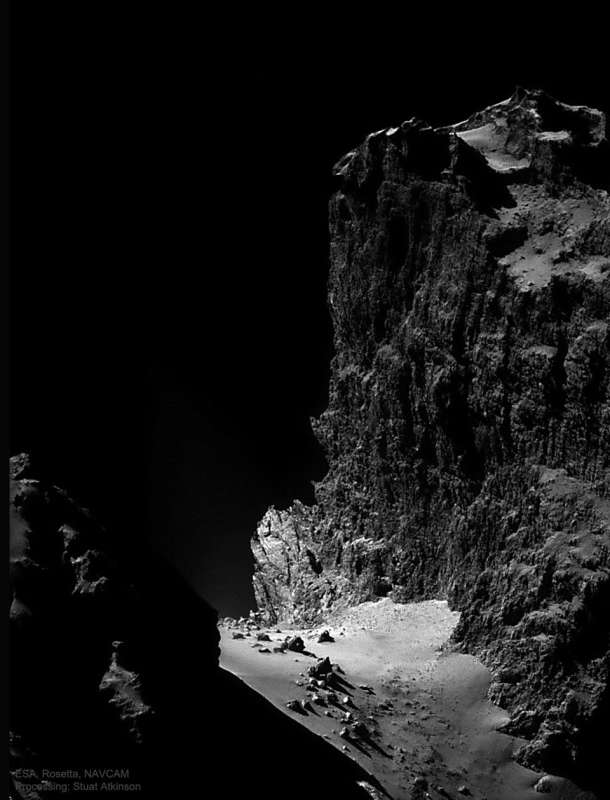
|
Credit & Copyright: Stuart Atkinson
Explanation:
This high cliff occurs not on a planet, not on a moon, but on a comet.
It was discovered to be part of the dark nucleus of
Comet Churyumov-Gerasimenko (CG) by
Rosetta,
a robotic spacecraft
launched by
ESA that rendezvoused with the Sun-orbiting comet
in 2014.
The ragged cliff, as featured
here, was imaged by Rosetta in 2014.
Although towering about one kilometer high, the low surface gravity of
Comet CG would likely make it an
accessible climb -- and even a
jump from the
cliff survivable.
At the foot of the cliff is relatively smooth terrain dotted with
boulders as large as 20 meters across.
Data from
Rosetta indicates that the ice in
Comet
CG
has a significantly different
deuterium
fraction -- and hence likely a different origin -- than the water in Earth's oceans.
Rosetta ended its mission with a controlled impact onto Comet CG in 2016.
Comet CG has just completed
another close approach to Earth and
remains
visible through a small telescope.
|
January February March April May June July August September October November December |
| ||||||||||||||||||||||||||||||||||||||||||||||||
NASA Web Site Statements, Warnings, and Disclaimers
NASA Official: Jay Norris. Specific rights apply.
A service of: LHEA at NASA / GSFC
& Michigan Tech. U.
Based on Astronomy Picture
Of the Day
Publications with keywords: comet
Publications with words: comet
See also:
- APOD: 2025 December 1 Á 3I ATLAS: Tails of an Interstellar Comet
- APOD: 2025 November 25 Á Comet Lemmon and the Milky Way
- 3I/ATLAS: A View from Planet Earth
- APOD: 2025 November 17 Á Comet Lemmons Wandering Tail
- APOD: 2025 September 30 Á Comet Lemmon Brightens
- APOD: 2025 September 29 Á Two Camera Comets in One Sky
- APOD: 2025 September 26 Á A SWAN an ATLAS and Mars
